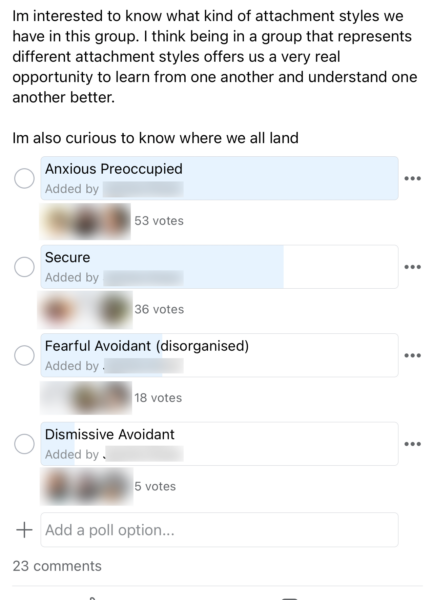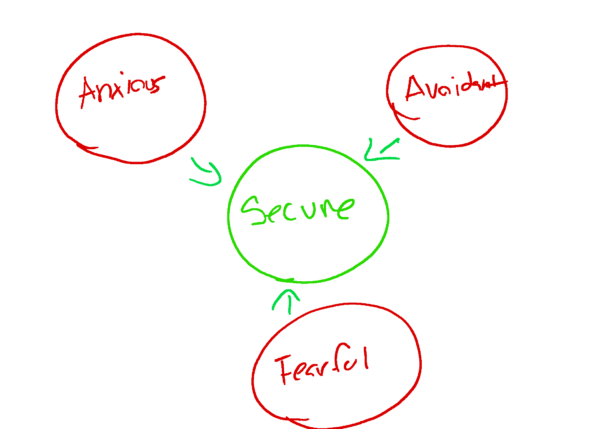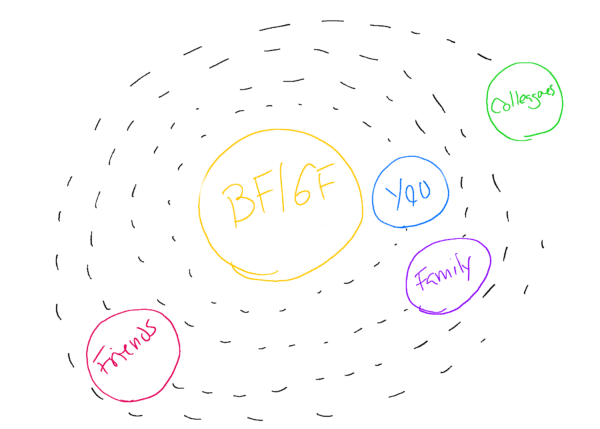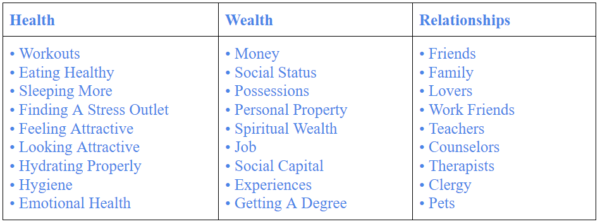I’m going to give you my eight best tips for coping with anxiety after a breakup.
And yes, these tips can work no matter if you’re just “a little” anxious or you’re having a full blown panic attack.
Here they are,
- Understand What The Statistics Say
- Understand What The Science Says
- Utilize Cognitive Behavioral Therapy (CBT)
- Set A Timer And Don’t Dwell
- Exercise Until The Thoughts Stop
- Sleep Recovery Is A Must
- Social Support Is Essential
- Find Your Magnum Opus
Let’s go right after it!

What Are Your Chances of Getting Your Ex Boyfriend Back?
Take the quizTip #1: Understand What The Statistics Say
Now, we’re pretty confident when we say that most of the clients that come through our program and our community tend to have what is considered anxious attachment styles.
Here’s my proof:
Anxious attachment styles are often defined by a deep fear of abandonment.
So, people with this attachment style often feel very insecure. They crave constant reassurance and attention from their partner. They are highly sensitive to small changes in their partner’s mood and behavior. Often, when these changes in behavior occur, they perceive these changes as signs that the partner doesn’t love them or wants to leave them.
This can almost become a self-fulfilling prophecy where the partner, who perhaps wasn’t initially considering departure, may eventually want to leave due to the constant need for reassurance and the high maintenance nature of the relationship.
What is interesting, or at least what’s ponderous, is the idea that attachment styles are quite capable of changing.
So, I was thinking; when we poll our community and ask them, ‘hey, what kind of attachment style do you guys have?’, the most common answer we get is ‘an anxious attachment style.’
Once again, I’ll attach the poll for you:
But if you look at the poll, there’s actually a lot of different answers on there.
- Some people claim that they’re secure.
- Some people claim that they’re avoidant.
- Some people claim that they’re fearful avoidant.
What I found interesting is this idea that your attachment style can change based on your experiences.
The biggest misconception people have about attachment styles is that, because they’re formed during your early childhood through interactions with your caregivers, they’re fixed. That is, you’re always going to be an anxious, fearful, or a secure person. But that’s not actually true. Attachment styles aren’t fixed and they aren’t unchangeable.
In fact, significant life events or experiences can alter your attachment style.
For instance, you might start off as a secure person, but get into a relationship with someone who has a severely avoidant attachment style. Their avoidance might trigger your anxious side to come out.
So, all of a sudden, by the end of the relationship, you’re incredibly anxious, when initially you entered it feeling incredibly secure.
The reverse can also happen. Individuals with an insecure attachment style can shift towards a more secure attachment style over time through therapy, self-awareness, or secure and supportive relationships.
I talk a lot about this concept called ‘secure attachment gravity.’

What Are Your Chances of Getting Your Ex Boyfriend Back?
Take the quizMany times, insecure attachments, when partnered with a secure attachment, have the opportunity to become more secure over time because they’re being led by example.
They can see what a secure attachment style is supposed to look like.
So, statistics basically suggest that it is likely that when you go through a breakup, anxious tendencies are going to come out.
But what does the science say?
Tip #2: Understand What The Science Says
Breakups are actually the perfect breeding ground for anxiety to come forth.
If you want to look at the science of breakups, I put together this really great article a few years ago where I thoroughly discussed what happens during a relationship, before it, and after it.
What’s really interesting is what happens after a relationship: cortisol shoots way up.
Here’s an example of that:
So, when you go through a breakup, your cortisol goes way up.
Cortisol is also known as the stress hormone.
And what does stress do?
Stress creates anxiety.
If you want to get really technical with this, generally speaking, cortisol can take around three to six hours to return to normal. However, if you are in a situation where cortisol stays in an elevated state for a long period of time, it can take as long as six months for that cortisol to return to normal.
So, as long as you’re stressed and thinking about your ex—pondering if they’re going out with someone new or obsessively checking their social media—that creates cortisol.
If cortisol stays in that elevated state for a long time, you’re much more likely to be stressed for a longer period.
So, science basically suggests that breakups, in and of themselves, are the perfect breeding ground for your anxiety to come forth.
Tip #3: Utilize Cognitive Behavioral Therapy (With A Professional)
Cognitive Behavioral Therapy (CBT) is basically a type of therapy that can help you understand and change thought patterns that lead to harmful behaviors or emotional distress, like anxiety.
It involves identifying the distortions in your thinking and challenging those distortions.
Once you challenge them, the idea is to replace them with more realistic and positive thoughts.
There’s a lot of research out there—I’ll attach some here—that backs up the fact that yes, this does work. This is an effective approach, but you probably should seek out a therapist to help you identify those thought patterns.
It’s something that I wouldn’t recommend trying alone without some sort of expert or scientific assistance.
There are four main steps in CBT.
Step #1: Identify Situations Or Conditions That Are Troubling
The first thing is you want to identify situations or conditions in your life that are troubling.

What Are Your Chances of Getting Your Ex Boyfriend Back?
Take the quizThese are going to include issues like medical conditions, divorce, grief, anger, and sometimes symptoms of a mental health disorder. You and your therapist ideally would spend some time deciding what challenges and goals you want to focus on.
Step #2: Become Aware Of Your Thoughts, Emotions And Beliefs Surrounding Those Problems
Once you’ve identified those troubling conditions, you want to become aware of your thoughts, emotions, and beliefs about those problems. So once you’ve identified the problems to work on, the therapist often will encourage you to share your thoughts about them.
This could involve observing what you tell yourself about an experience, in other words, your self-talk.
It’s a lot about bringing the unconscious out into the open. These are thoughts that you may be afraid to voice, but you think.
Step #3: Identify Negative Or Inaccurate Thinking
The third part is really about identifying negative or inaccurate thinking. To help you recognize patterns of thinking and behaviors that are contributing to your problem, your therapist might ask you to pay attention to your physical, emotional, and behavioral responses in different situations.
Step #4: Reshape Them
Once you identify those negative, inaccurate thoughts you’re telling yourself or thinking, you are supposed to reshape them. This step involves questioning your own thoughts and challenging them.
Your therapist may ask you to test the reality of your thoughts, step back from your thoughts to see them more clearly, and change your usual interpretation of events.
Here’s An Example Of What It Would Look Like
A common example can be that you’re about to go out, you’re getting late for lunch with a friend, but you find out that you’ve lost your keys. You start frantically looking around the house for the keys, and internally you start thinking,
‘Gosh, I’m so stupid. How could I lose the keys?’
This is negative self-talk. Now that you’ve identified that negative self-talk, you would stop yourself and say,
‘No, I’m not stupid. I just misplaced them. Anyone can misplace them.’
And then you would move on. That is the idea of cognitive behavioral therapy.
Tip #4: Set A Timer And Don’t Dwell
The next big tip I have for coping with anxiety is to set a timer and not dwell.
I recently watched a documentary released by Netflix about Arnold Schwarzenegger.
What struck me about this documentary was how he would set a goal, and then nothing would stop him from achieving it.
Anytime he would encounter a setback, he wouldn’t allow himself to dwell on it; instead, he would just keep marching forward.
I find that quite admirable because, from our clients at least, one of the things I’ve noticed is that they often dwell on the past.
They’re really consumed by thoughts like,
- ‘What did I do wrong?
- How can I fix it?
- Oh my God, I’m so stupid.’
This is a lot of that negative self-talk.
And while I do think it’s important to feel the negative—since if you don’t, it often just builds inside of you until it’s ready to explode like a volcano, leaving you no better off than when you started—I would suggest a strategy that we’ve been teaching our clients.

What Are Your Chances of Getting Your Ex Boyfriend Back?
Take the quiz- When you’re having one of these low moments, feeling grief or anxiety, it’s important to take out your phone and set a timer.
- Generally, you want the timer to be between 10 and 15 minutes.
- During that 10 or 15 minutes, allow yourself to feel every single thing. We don’t want you to believe the self-talk—that’s where the CBT comes into play—but do allow yourself to feel it.
- When the timer goes off, put the feelings away and move on towards your ultimate goals.
That’s why it’s important to have a ‘magnum opus’ or an ultimate goal. But I want to delve into that a little more later.
Tip #5: Exercise Until The Thoughts Stop
Many people don’t really like to discuss exercise, but physical activity has been found to significantly reduce anxiety and improve mood. This is due to the production of endorphins, chemicals in the brain that act as natural painkillers and mood elevators.
So, exercise is great, but here’s my specific advice on exercise.
The only thing that works for me when I’m incredibly anxious is to literally jump on the bike and keep pedaling.
Pedal and pedal, pushing beyond what you think you can handle. You make yourself so tired that the negative and anxious thoughts stop, shifting your focus to a survival mode where ‘I just need to get through this workout’ becomes the prevailing thought.
You need to keep going until the thoughts stop.
At the end, what you’ll find is not only will you feel great about surviving this intense workout, but you’ll also feel less stressed, which puts everything else into perspective.
You realize that the stuff you were worried about isn’t as big a deal as you initially thought. And as you get into the habit of doing this, it creates a healthy way of redirecting those negative, anxious thoughts into something positive that benefits you.
You might notice that this is a common theme in my belief system, which is to use negativity or anxiety as fuel to redirect it into something else.
Tip #6: Sleep Recovery Is A Must
Another aspect to consider is sleep recovery.
It has been proven that lack of sleep or poor-quality sleep can exacerbate anxiety.
Therefore, maintaining good sleep hygiene is essential.
- This often involves sticking to a consistent sleep schedule
- Creating a restful environment
- And avoiding stimuli before bedtime
- Among other things.
Personally, I’m not the best at avoiding stimuli; I tend to watch my iPad before bed until I feel sleepy, then I turn it off and go to sleep. The key point is that sleep is all about recovery.
There’s this guy I follow on YouTube, Lionel Sanders, who’s a professional triathlete.
He constantly wears this watch that’s designed to monitor his sleep efficiency.
It tells him how long he’s slept and how restful that sleep was. I’m not suggesting that everyone should go out and buy such a watch, but the idea here is that sleep is a critical component, especially for a triathlete.
They understand the importance of good sleep for recovery because the body functions better when it’s well-rested.
Poor-quality sleep or insufficient sleep can amplify the anxiety you’re already feeling. So, the goal is to shift your focus away from dwelling on the anxiety, thus preventing it from worsening.
Tip #7: Social Support Is Essential
The next aspect to consider is social support.
The idea is that connecting with others can make you feel understood and less isolated.
One of our core beliefs is that our community is the most valuable thing we have ever created.
Over the past decade, I’ve engaged in coaching sessions, offered email coaching, developed informational products, and designed courses.
But when you speak with the success stories that have emerged from all these efforts, one thing that consistently stands out is the sense of community.
I believe this is because they connect with others experiencing similar challenges – breakups, anxiety – making them feel understood and less alone.
Often, when going through a breakup, people feel isolated because they’re afraid to voice their thoughts. They may be thinking about their ex and experiencing anxiety.
Many of our clients want their exes back, something that isn’t always socially accepted, leaving them uncomfortable discussing it with friends and family. However, within a support community, they can connect with people who can become their friends.
We’ve developed a feature within our community called the ‘Battle Buddy Program,’ where we aim to pair you with someone in a similar situation, providing support when we’re not available to help.
And let me tell you, PEOPLE LOVE IT!
Tip #8: Find A Magnum Opus
Finally, it’s crucial to find your ‘magnum opus.’
This is especially important for someone trapped in a co-dependent relationship.
Many of our clients not only deal with anxiety but also exhibit co-dependent tendencies. Their world revolves around their ex, and when that relationship ends, they often feel lost.
My advice is to find something else you care about as much, if not more than, your ex to invest your time in.
I refer to this as the ‘magnum opus.’
The best way to discover it, in my opinion, is through our ‘Trinity’ concept.
This involves dividing your life into three distinct sectors:
- Health
- Wealth
- Relationships
And aiming to improve in all areas.
The ‘magnum opus’ is found at the intersection of these three sectors.
It should be something that positively impacts your health, wealth, and relationships, and it must be something you’re passionate about.
A ‘magnum opus’ should represent a life’s pursuit.
Ideally, it should be challenging to achieve because if it’s easily achievable, it doesn’t serve as a worthy life pursuit. Having a ‘magnum opus’ helps put things into perspective, reducing worry about your ex.
It fosters a sense of self-assuredness, even if you never get back with your ex or if you never talk or think about them again. As you work towards your ‘magnum opus,’ you’ll find many other aspects of your life falling into place.





